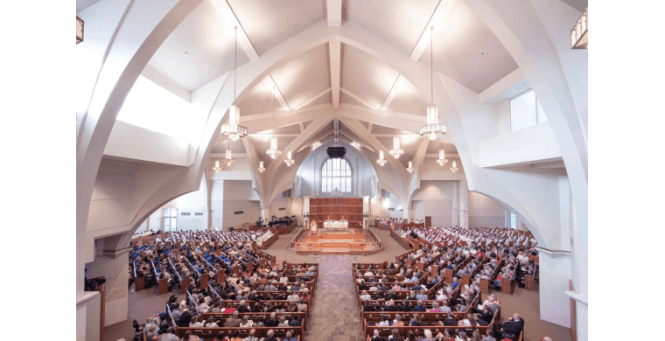ANGLICAN ATTENDANCE STRONGLY REBOUNDS
By Jeffrey Walton
Juicy Ecumenism
June 23, 2023
Anglican congregations in the United States, Canada and Mexico are reporting a significant attendance increase of 17,228 persons following a widespread return to regular worship services post-COVID. The Anglican Church in North America (ACNA) is also reporting modest growth in both membership and total number of churches in 2022.
Overall Average Principal Service Attendance in 2022 was 75,583, up 30 percent from 58,255 in 2021. Membership increased 2,549 (up 2 percent from 122,450) in 2021 to 124,999 in 2022. Congregations grew by three to 977 total.
Membership and attendance are among several metrics tracked year-over-year by ACNA. Baptisms were up 27 percent and confirmations up 25 percent from 2021-2022. Receptions from other liturgical denominations were down 8 percent, while reaffirmations were up 46 percent.
“The bottom line in 2022 is that membership and the total number of our congregations showed modest increases, while attendance has rebounded encouragingly and pastoral ministry has bounced back significantly,” ACNA Canon for Communications Andrew Gross told ACNA Provincial Council on Friday, June 23 at Christ Church Cathedral in Plano, Texas. Gross noted that attendance remained down from a pre-COVID high of 84,310 in 2018.
Attendance appears to be healthy across most of the ACNA: only three dioceses out of 29 jurisdictions reported a decline from 2021 to 2022. Membership, which was less volatile amidst the period of COVID restrictions, was mixed: 18 of the 29 reported a gain across the same period.
Among dioceses reporting the largest attendance increases are the Anglican Diocese of South Carolina up 2,722 (48 percent), the Diocese of the Mid-Atlantic up 1,756 (53 percent) and the Diocese of Churches for the Sake of Others (C4SO) up 2,540 (46 percent). Significant increases were also reported by the Anglican Network in Canada up 1,018 (42 percent), the Anglican Diocese of the South up 1,231 (28 percent) and the Diocese of the Rocky Mountains up 1,085 (45 percent).
Gross shared that the largest number of ACNA congregations are in the state of Texas (113), followed by South Carolina (101), California (73), Pennsylvania (55) and Virginia (51). North Dakota remains the only U.S. state without an ACNA congregation.
The 2022 numbers are a welcome improvement from 2021, when ACNA congregations reported a 30 percent decline since pre-pandemic 2020 numbers. Membership in 2021 had dropped 3 percent and the net number of churches grew by two with 25 churches planted in 2021.
Gross noted that the total number of churches in 2022 does not include the Diocese of All Nations (formerly CANA West) that joined ACNA this year. When those 2023 numbers are reported, it should bring ACNA to more than 1,000 total congregations, the ACNA official predicted.
These numbers can (for the moment, at least) be accessed from the Congregational Reporting presentation at the Provincial Council 2023 document center here. I’ve provided the PDF file below.
The ACNA is among the earlier U.S.-based denominations to provide a complete report of 2022 statistics, following the Presbyterian Church (USA) in May. The Episcopal Church customarily reports statistics for the prior year in the autumn.
More: IRD coverage of Anglican Church in North America numbers for 2021 can be viewed here https://juicyecumenism.com/2022/06/23/north-american-anglicans/ while numbers from 2020 can be accessed here. https://juicyecumenism.com/2021/06/24/anglican-numbers-2020


I think people are exhausted of the ultrarich white social justice warrior act. The biggest rise of all has been of the nones. For very good reason. That said, I think it’s wrong that the national episcopal church spent so much money suing their former congregations.
Having served as a warden, I’ve been known to make the crack that, if you really want to get someone, give ‘em one of those big old heaps we call churches. The gas and electric bills are astounding. And how the church thinks it’s going to deal with global warming by holding onto some of the least energy-efficient property in the world escapes me.
EB
Oh ya, the irony, after all that to be stuck with a bunch of empty buildings! Seems the episcopal’s have lost their children, but at least they have old buildings.